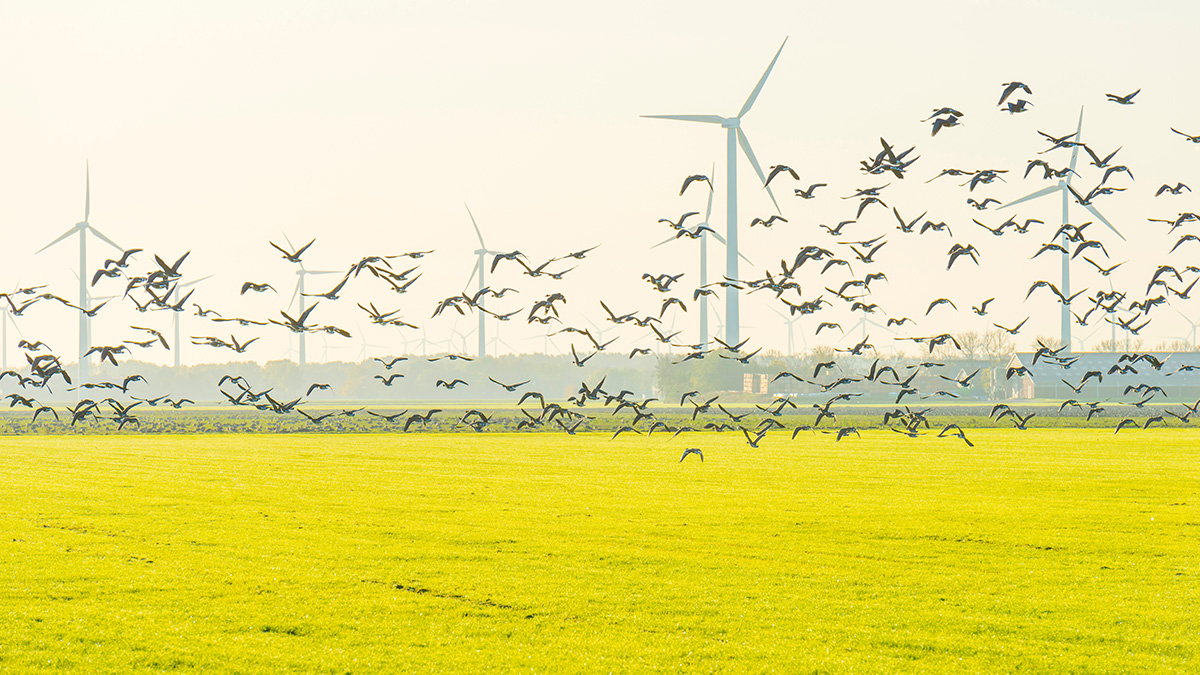News
Crunch time for Member States to act on renewables permitting and nature protection

22 June 2022
The European Commission has published its Nature Protection Package. The package implements the EU 2030 Biodiversity Strategy, part of the European Green Deal. It’s also supporting the REPowerEU Action Plan, the measures to reduce Europe’s dependence on Russian fossil fuels and accelerate the growth of renewables, which the Commission presented on 18 May. The expansion of wind energy needed to meet our climate goals and enhance our energy security goes hand in hand with nature protection. It’s crucial to have a good working balance between these parallel sets of public policy interests
Two years ago the EU 2030 Biodiversity Strategy proposed legally binding EU nature restoration targets and requirements for national biodiversity restoration plans. It introduced protected areas for 30% of the EU’s landmass and oceans. It acknowledged the importance of renewable energies in protecting ecosystems and mitigating the negative environmental effects of climate change.
Today’s Nature Protection Package builds on this. It enshrines in EU law a 20% binding restoration target of European seas and land. It’s a key opportunity to halt and reverse biodiversity loss in Europe. With our NGO and Transmission System Operators colleagues in the Offshore Coalition for Energy and Nature (OCEaN), WindEurope called recently for strong EU restoration targets and a framework to support ecologically-sound offshore wind and electricity grid deployment.
WindEurope’s CEO Giles Dickson said: “It’s good the Commission is developing Europe’s nature protection rules in line with the REPowerEU strategy. Biodiversity and renewables go hand in hand. The wind industry remains committed as ever to protect biodiversity. We work closely with NGOs to mitigate impacts on wildlife – and with local communities that host our wind farms.”
Climate change is one of the biggest threats to nature and biodiversity. And renewable energy is the most efficient solution to reduce CO2 emissions and help decarbonise our economy. Using wind to produce energy has fewer effects on the environment than other energy sources. Wind farms produce zero SOx, NOx and PM. They consume hardly any water. Their CO2 footprint is negligible: a turbine pays off its lifecycle emissions in less than one year of operation.
And the wind industry works actively to protect the local environment where wind farms are built. We do everything possible to prevent, manage and mitigate these environmental impacts: through the planning, siting and design of wind farms; and in the way we build and operate them. Wind farms can also impact positively on their local environment and support biodiversity restoration. They can serve as safe havens for bees and other pollinators. Offshore wind farms can help restore marine life, through aquaculture, artificial reefs and increased fish stocks.
The Nature Protection Package ties in with Europe’s new energy security strategy, REPowerEU. The expansion of renewable energy and nature protection need to have a good working balance. The EU wants wind to be 50% of its electricity by 2050. It wants wind capacity to rise from 190 GW today to 510 GW by 2030. This means building 39 GW of new wind farms every year. Last year we built only 11 GW – because of bottlenecks in permitting.
REPowerEU sets out measures to simplify the permitting of new renewables, and it is essential these are implemented as soon as possible. It proposes enshrining in EU law the principle that renewables expansion is in the “overriding public interest” – so it can be prioritised on a case-by-case basis and until climate neutrality is reached. It envisages faster permitting in all areas where it’s possible to build renewables, and very fast permitting in selected “go-to” areas where biodiversity risks are minimal. It also strengthens the population-based approach to species protection, which is already part of EU law.
The Energy Ministers of the 27 EU Member States meet next Monday 27 June and will have the chance to agree the changes to permitting rules the EU Commission have proposed to the Renewables Directive as part of REPowerEU. It’s a great opportunity for them to inject momentum into the simplification of permitting.
WindEurope CEO Giles Dickson said: “With REPowerEU’s new permitting rules and today’s Nature Protection Package, Member States now have a full picture of the good working balance between biodiversity and renewables expansion. They now need to implement the REPowerEU measures on the simplification of permitting. And EU Energy Ministers need to agree ASAP the new rules on this that the Commission have proposed in the EU Renewables Directive.”

